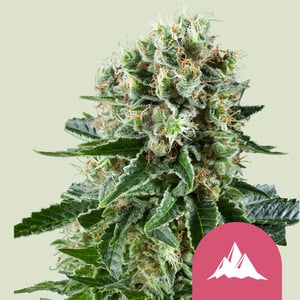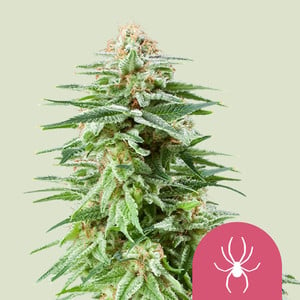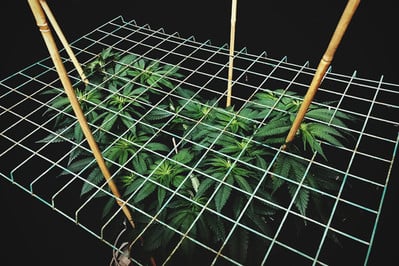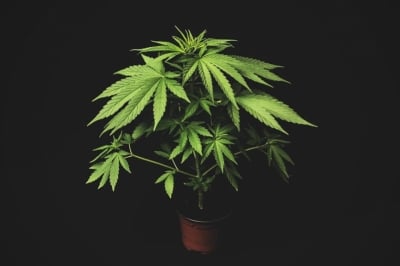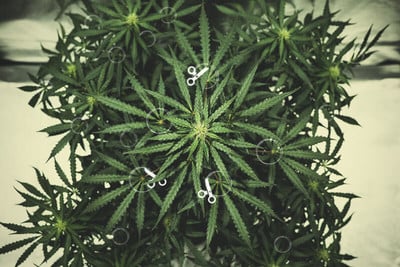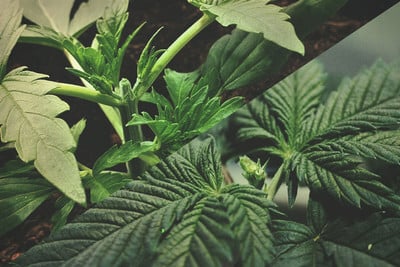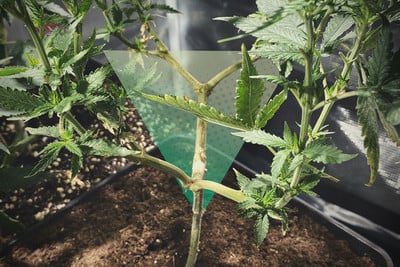.

How To Grow A Marijuana Bonsai
Marijuana bonsai trees are real. They're not a myth. You can grow a Bonsai ganja tree to soothe your soul and make you happy and high. Check it out.
Contents:
In the never-ending quest to produce the best buds around, growers have developed several strategies to optimise their cannabis grow. One of these strategies is the growth and maintenance of cannabis bonsai trees.
Similarly to regular bonsai trees, cannabis bonsais are miniature plants that never really grow beyond a number of centimetres. These plants provide growers with an effective source of clone clippings, without taking up too much space or requiring too many resources. And best of all, they are quite easy to set up and maintain.
WHAT IS A BONSAI TREE?
A bonsai tree is essentially a miniature tree. However, the term bonsai does not refer to a specific species of tree, but rather to the growing technique used to keep trees at this small size. The goal of growing a bonsai tree is to develop a healthy, mature, authentic plant that will only grow to a fraction of its natural size.
Originating in ancient China and Japan, the practice of growing bonsai trees has lasted for over a thousand years. Translated from Japanese, the word bonsai means “planted in container”. By planting trees in small containers, their ability to absorb nutrients and develop extensive root systems is restricted, resulting in their miniature size.
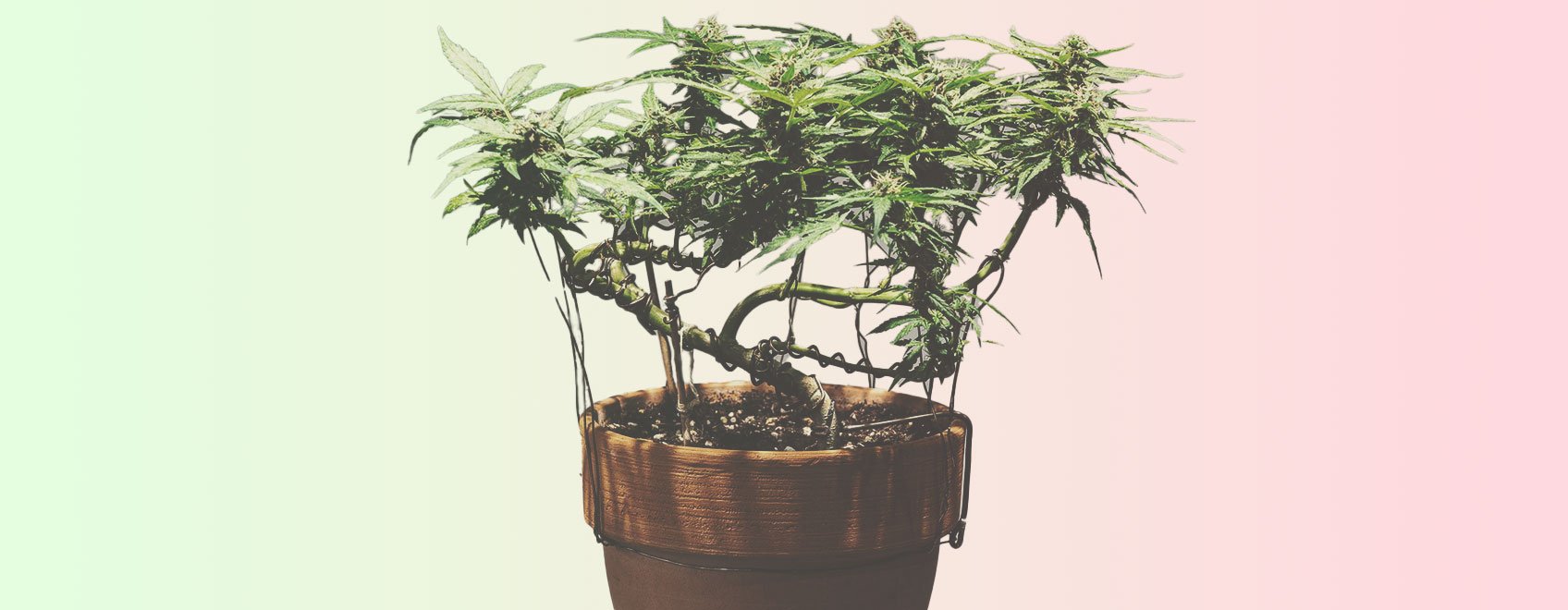
CANNABIS BONSAI TREES
The primary reason why people grow canna-bonsai trees is to produce clone clippings. Because each mother plant remains small, cannabis bonsais takes up much less space than a full-grown mother plant.
If you are working with few plants and limited space, bonsai trees can be a real space-saver. However, the utility of these plants really becomes apparent in larger cannabis gardens where several canna-bonsai mothers can provide a huge variety of genetics for the entire garden. Creating and maintaining several small mother plants to use for clone clippings is a great way to maintain diversity in your cannabis garden without having to rely on seeds.
HOW DO YOU GROW A CANNABIS BONSAI?
There are several steps to planting and growing a cannabis bonsai tree.
STEP ONE: PREPARE THE POT
The first step is preparing your pot for the plant. Since you’re growing bonsais, you want to select a suitably small pot. In order to facilitate training, some growers prefer to drill holes around the perimeter of the pot for string or twine. Just make sure that the holes are big enough to actually fit the twine you are planning on using. Failing to do so may result in a bad surprise when it comes time to train.
STEP TWO: PLANT YOUR CUTTING
The second step is to properly set the mother plant in the pot. When choosing a cutting for a mother plant, make sure that you pick a healthy and sturdy one. Clippings can be taken from the plant several times per year, so it’s important to ensure the mother of these clones is capable of producing quality buds.
After the mother plant is in the pot, you will need to situate a wooden stake to help train the plant’s main stem. You can use this stake to position the trunk of your bonsai any which way you want. It's important to avoid any potential root damage during this stage. Gently press the stake into the soil alongside the stem so as to avoid damaging the roots. Afterward, you can use string or twine to tie the stem to the stake and the holes previously drilled in the pot.

STEP THREE: TIME TO TRAIN
The third step is training your canna-bonsai’s branches. Similarly to how you trained the stem, you can train the plant’s branches by tying them down with twine. If you want your branches to be more horizontal, then tie them down with more force. If you prefer them to be more vertical, tie them down more loosely. When tying, make sure to leave a little room so the branches can grow without too much constriction.
STEP FOUR: PRUNING
Now it’s time to prune the branches. As the plant grows, its branches must be restricted in order to preserve the classic bonsai shape and stature, and to maintain airflow to the plant’s main stem. It’s important to only prune offshoot branches, as cutting main ones could seriously hurt the health and growth of your plant.
How long bonsai mother trees should be kept around for is a topic of debate. Since canna-bonsais are held indefinitely in the vegetative stage, they can technically be kept for as long as they are alive. Many growers have found that pure indicas degrade quicker and pure sativas last longer. Generally, you should consider replacing indicas every 3–4 years, replacing hybrids every 4–5 years, and replacing sativas every 5–6 years. However, these timeframes are far from certain, and will largely depend on the strain, and the quality of care that the plant receives during its life.

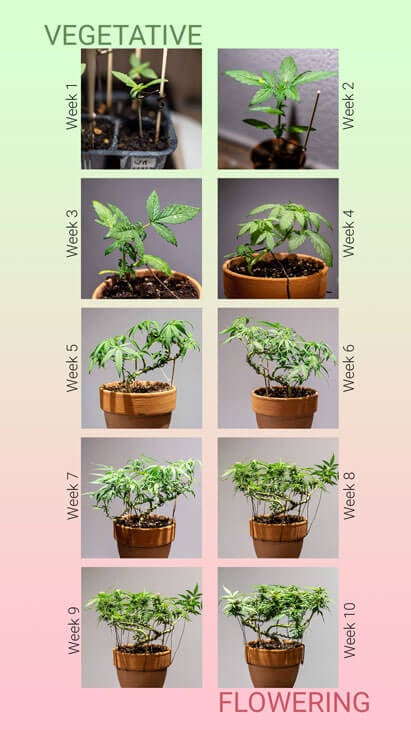
WHICH STRAINS ARE BEST FOR CANNABIS BONSAI TREES?
Because each strain’s genetics are different, certain cultivars will be better suited for developing into canna-bonsais. Here are a couple of strains that, thanks to their short stature, we think are ideal candidates for growing into canna-bonsai trees.
CRITICAL KUSH
Critical Kush is an indica-dominant hybrid that grows short and bushy thanks to its 80:20 indica:sativa ratio. Moreover, this strain’s high THC content and relaxing, sedative properties make it an excellent source of indica.

Critical Kush
|
|
Critical x OG Kush |
|
|
18 to 19 oz/m² |
|
|
2 to 3 feet |
|
|
8 - 10 weeks |
|
|
THC: 20% |
|
|
Sativa 20% Indica 80% |
|
|
18 to 19 oz/plant |
|
|
3 to 5 feet |
|
|
Late September |
|
|
Long Lasting , Physically Relaxing, Powerful |
WHITE WIDOW
White Widow is a Dutch classic that has grown into one of the most legendary strains on the planet. This well-balanced hybrid delivers a potent mix of sativa and indica effects, and features soaring THC levels of over 20%. If you are considering growing an indica-sativa hybrid canna-bonsai, you can’t go wrong with White Widow.

White Widow
|
|
White Widow S1 |
|
|
16 to 19 oz/m² |
|
|
2 to 3 feet |
|
|
8 - 10 weeks |
|
|
THC: 19% |
|
|
Sativa 50% Indica 50% |
|
|
19 to 21 oz/plant |
|
|
5 to 6 feet |
|
|
Early October |
|
|
Powerful , Stoned |


























